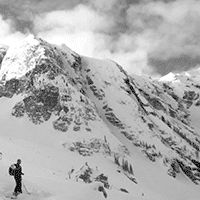La Niña is coming: Who are going to be the winners and losers this winter?
We’ve all likely heard that one of the strongest El Niños on record is finally fizzling out and conditions are now transitioning into a La Niña event over the course of the summer. As long as the cold mass of water continues to build in the Pacific then surface water temperatures are likely to drop. This will result in what some are predicting to be a very strong La Niña event.
What is La Niña you ask? This is when the sea surface temperature across the equatorial Eastern Central Pacific Ocean are lower than normal by 3–5 °C.

One of the strongest El Niños on record has been dominating the tropical Pacific Ocean for the past year. But beneath the surface, a deep pool of cool water has been sliding slowly eastward for the past couple of months. This massive, slow-motion wave is a favourable sign that—the cool phase of the ENSO climate pattern—might develop.
This animated gif shows where temperatures in the top 300 meters (~1,000 feet) of the Pacific Ocean at the equator were warmer or cooler than average during 5-day periods centred on three dates this spring: March 14, April 13, and May 3.

As the weeks pass, the layer of warm water at the surface contracts to the central Pacific and becomes very shallow, a sign that the current El Niño is on its way out. By the final frame of the animation, the cold pool is just breaching the surface of the eastern Pacific off South America. (You can see these cool-water breakthroughs in our map of April 2016 surface temperatures.
ENSO (which scientists pronounce “en-so,” like a word) is short for El Niño-Southern Oscillation. ENSO is a natural climate pattern in which the central-eastern tropical Pacific swings back and forth between a warm and rainy state (El Niño) and a cooler and drier state (La Niña).
ENSO’s impacts on wind, air pressure, and rain throughout the tropics can have cascading side effects around the whole globe, including shifting the location of the mid-latitude jet streams that guide storms towards the United States. El Niño and La Niña also tend to have seesawing impacts on the Atlantic and eastern Pacific hurricane seasons.
The influence of ENSO on temperature and precipitation in the United States is weakest in summer and strongest in winter. Last week, NOAA continued the previous month’s La Niña watch, indicating that conditions were favourable for La Niña to develop by fall.

So what could this mean for us skiers? Well, here are some early predictions of the La Niña winners and losers based on temperature and precipitation records:
La Niña Winners
The Pacific Northwest
The Northern Rockies
Coastal BC
The Northeast
La Niña Toss-ups
Wasatch
Northern California
Central Rockies
La Niña Losers
The Southwest
Southern California
The Southeast
What's your take on all of this? Login and let us know.








